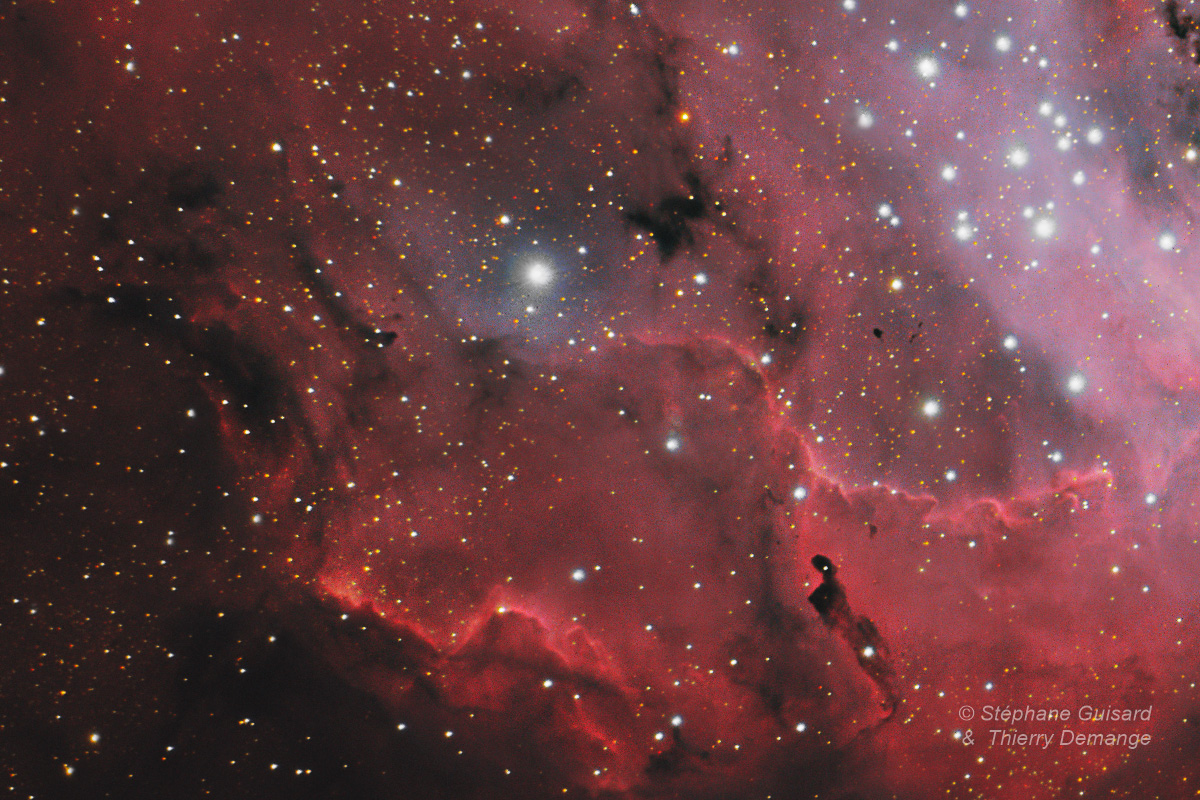HOME
Messier 8, the Lagoon Nebula
From the Atacama desert with a small telescope.
© Stéphane Guisard,
Los Cielos de América
& Thierry Demange,
CapNature
The Lagoon Nebula (catalogued as Messier 8 or M8, and as NGC 6523) is a giant interstellar cloud in the constellation Sagittarius. It is classified as an emission nebula and as a H II region. It was discovered by Giovanni Hodierna before 1654 and is one of only two star-forming nebulae faintly visible to the naked eye from mid-northern latitudes. Seen with binoculars, it appears as a distinct oval cloudlike patch with a definite core. A fragile star cluster appears superimposed on it.
The Lagoon Nebula is estimated to be between 4,000-6,000 light years from the Earth. In the sky of Earth, it spans 90' by 40', translates to an actual dimension of 110 by 50 light years. Like many nebulas, it appears pink in time-exposure color photos but is gray to the eye peering through binoculars or a telescope, human vision having poor color sensitivity at low light levels. The nebula contains a number of Bok globules (dark, collapsing clouds of protostellar material),
The picture shown here was taken from the Atacama desert in Chile with a small (128mm diameter) refractor telescope (Takahashi FS128) and a SBIG ST11000 CCD camera mounted on an Astelco NTM500 equatorial mount. Total exposure time is 7h50 minutes through Halpha, Luminance, Red, Green and Blue filters. Image acquisition and pre-processing by Stéphane, color processing by Thierry.
Can you find the Lagoon nebula in this wide field mosaic of the center of the Milky Way ?
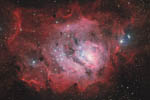
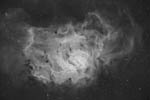
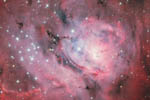
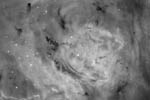
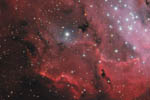
M8 Nebula, full image field in Ha, L, R, G, B
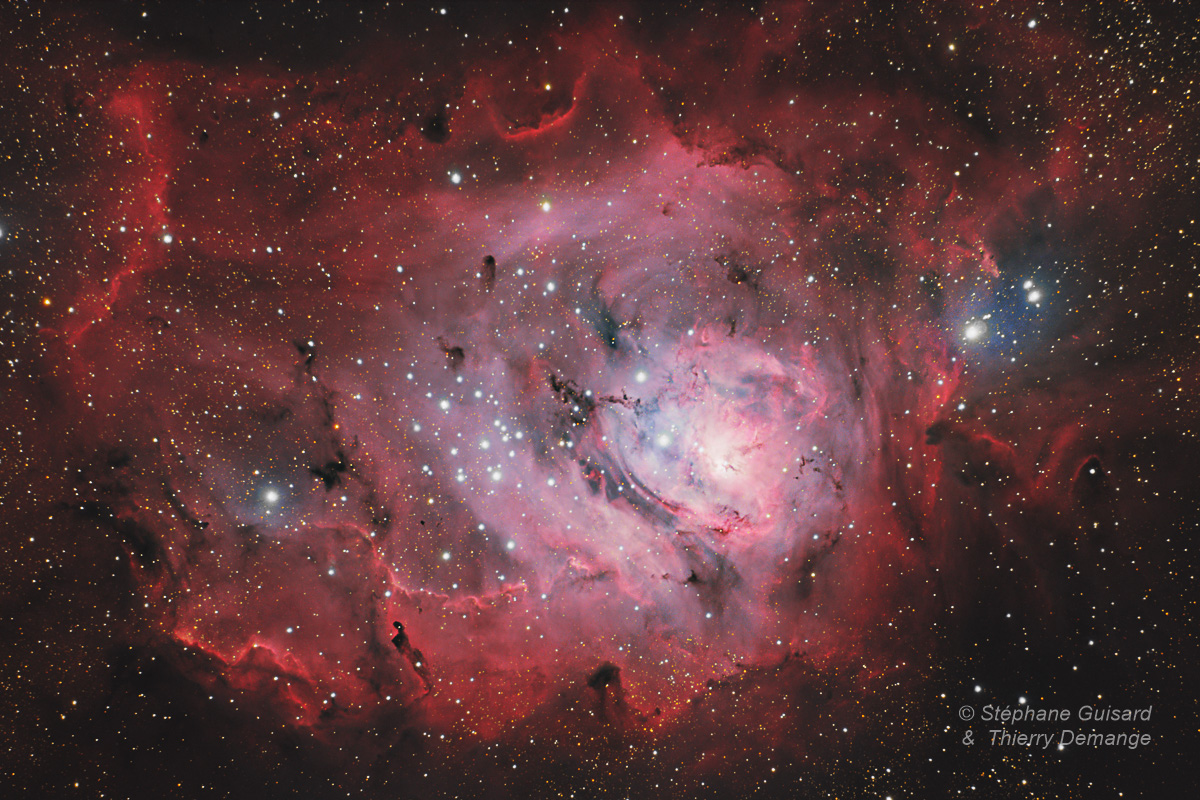
M8 Nebula, full image field in Halpha, exposure time 3h20min.
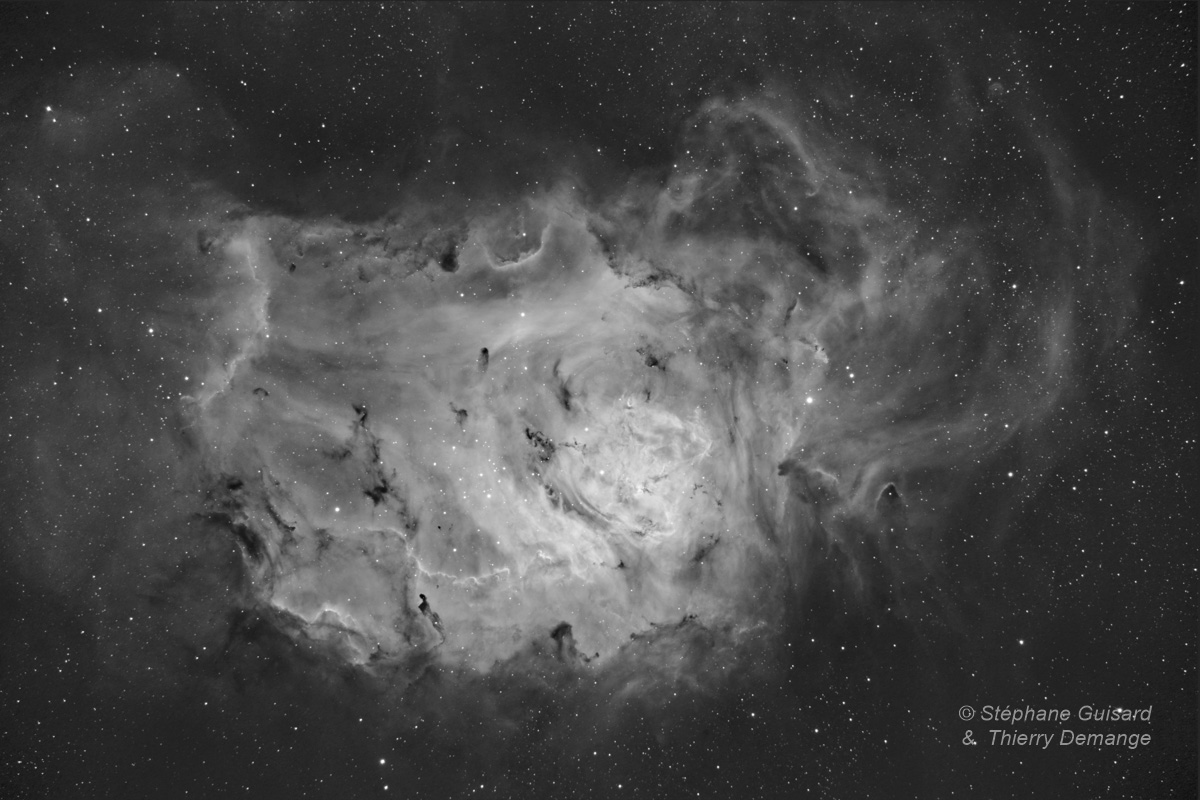
M8 Nebula, full resolution image crop of the center of the nebula in Halpha,L,R,G,B.
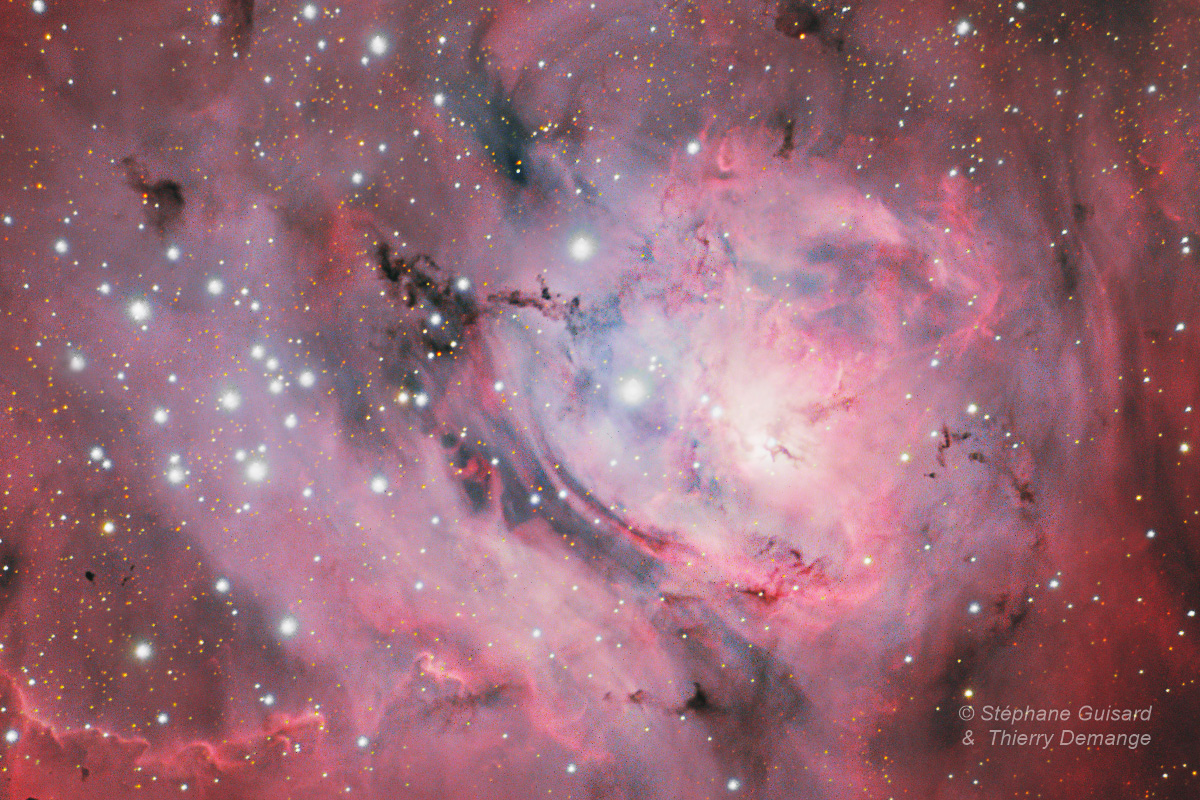
M8 Nebula, full resolution image crop of the center of the nebula in Halpha, exposure time 3h20min.
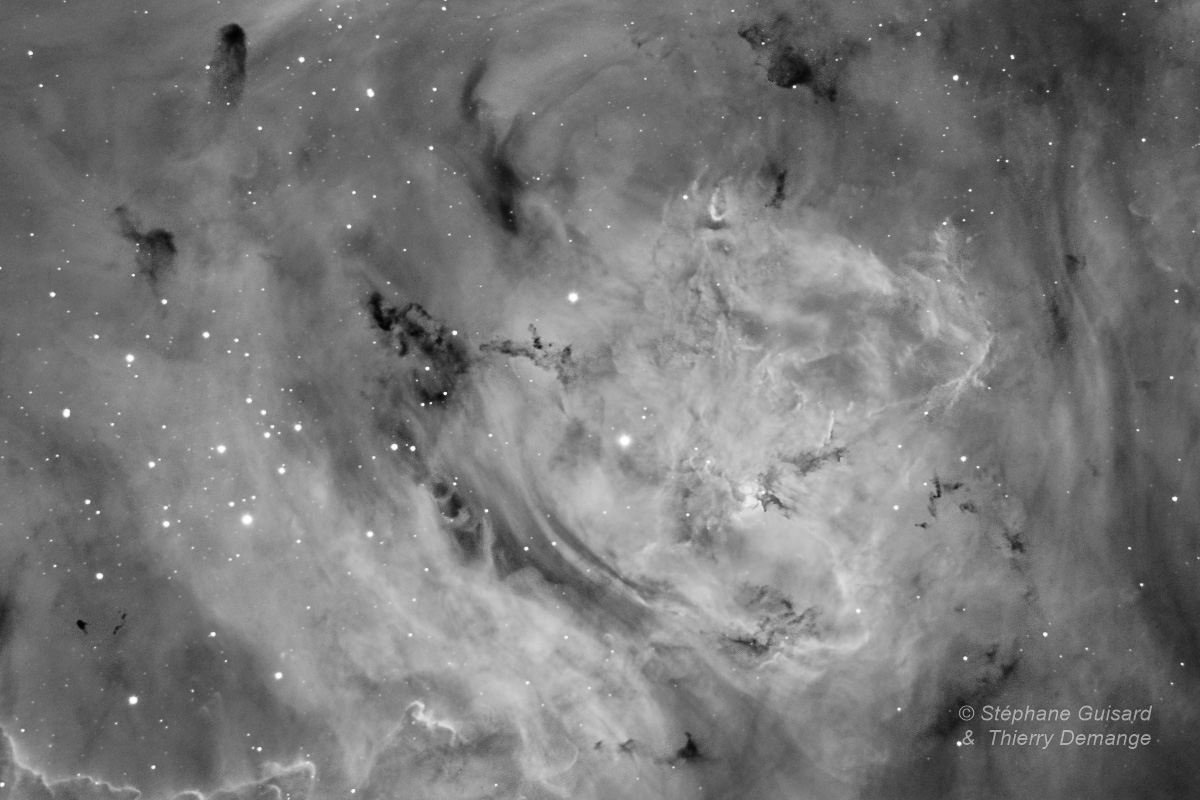
M8 Nebula, crop of the full resolution image of the nebula.
